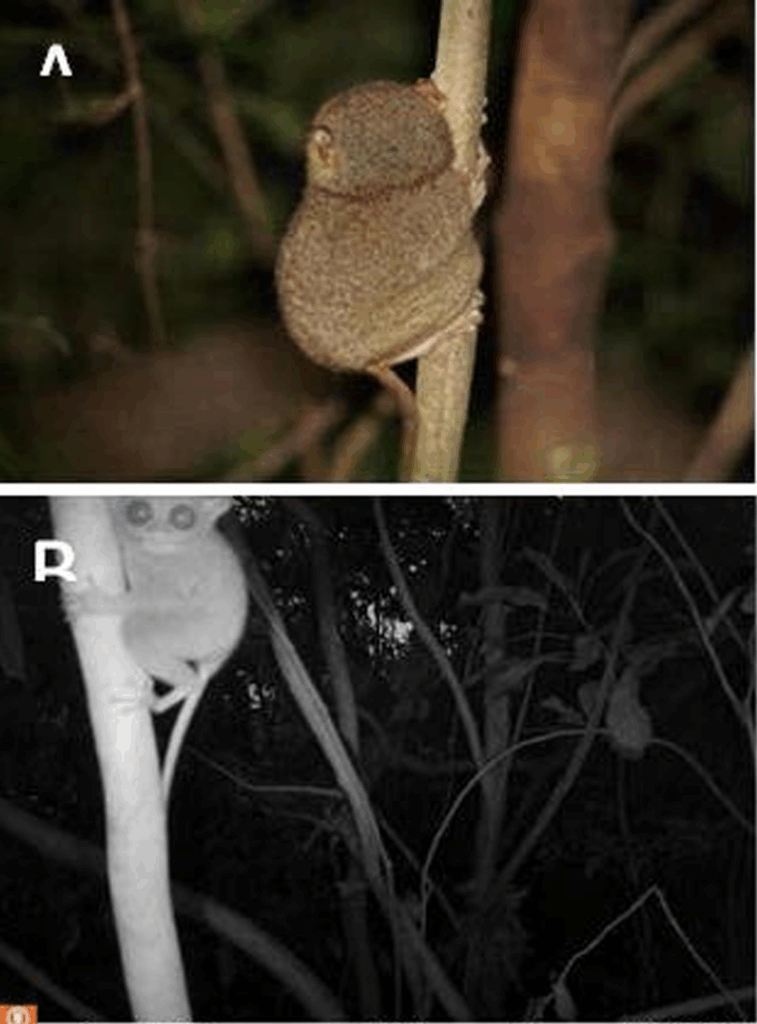Tarsiers need small forest fragments to survive, making it crucial to protect these isolated environments
12 Sep 2024

The Philippine tarsier Carlito syrichta (Linnaeus, 1758) is considered a specially protected flagship species in the Philippines. However, the species is threatened due to natural disasters and human activities. Little is known about the ecology and existing threats of tarsier populations in some islands in the Philippines, particularly in Samar, Dinagat, Biliran, and Leyte. In this study, we report the existence of a population of tarsiers utilizing a karst forest patch in Hindang, Leyte, and characterize the habitat of the species after a super typhoon. Using field-based observations, camera traps, and Focus Group Discussions (FGDs) with the
stakeholders, we generated baseline data on tarsiers in Mt. Bontoc, their habitats, and the existing and possible future threats. Results revealed that tarsiers were present in forested areas dominated by small-sized trees having a mean diameter at breast height (DBH) of 2.5 centimeters and a mean height of 5.0 meters. These trees are harvested for firewood. Recorded threats to the population and its habitat include incidental captures of the animal, typhoons, forest fires, and the presence of exotic animals. FGDs revealed high concerns of the stakeholders for the protection and conservation of the species and the inclusion of the tarsiers for local management and tourism strategies in the future. The study highlights the significance of field visits and community participation to assess the local threats to tarsiers for future actions in terms of biodiversity conservation in fragmented habitats.
This paper adds to the scant and sporadic literature on Philippine tarsiers in Leyte Island, providing information on its distribution, existing habitats, ecology, and threats. Here, we demonstrate the community knowledge of the locals and its importance in identifying the threats to the tarsiers and their habitat in Mt. Bontoc. The presence of Philippine tarsiers in a small, fragmented, and isolated karst forest before and even after a super typhoon also highlights the viability of an isolated environment as a suitable habitat for this cryptic and sensitive species. Considering this, it is imperative to protect small forest fragments which have the potential in supporting tarsier populations. Furthermore, the information presented here opens new possibilities and future directions in terms of research (e.g. home range studies, camera trapping, citizen science approach) and conservation of tarsiers and their habitat.
Authors:
Jay Torrefiel (Division of Natural Sciences and Mathematics, University of the Philippines Visayas Tacloban College), Brian Sabanal (Department of Biological Sciences and Environmental Studies, College of Science and Mathematics, University of the Philippines Mindanao), Chester Breech Cuta (Department of Biological Sciences, College of Arts and Sciences, Visayas State University), Israel Embayarte (Department of Biological Sciences, College of Arts and Sciences, Visayas State University), Ris Menoel Modina (Department of Biological Sciences, College of Arts and Sciences, Visayas State University), Crislin Cruz (National Coconut Research Center -Visayas, Visayas State University), Fretzeljane Pogado (Department of Biological Sciences, College of Arts and Sciences, Visayas State University), Kim Dianne Ligue (Department of Mathematics, Physics, and Computer Science, College of Science and Mathematics, University of the Philippines Mindanao) and Lief Erikson Gamalo (University of the Philippines Mindanao)
Read the full paper: https://wildlife-biodiversity.com/index.php/jwb/article/view/252
